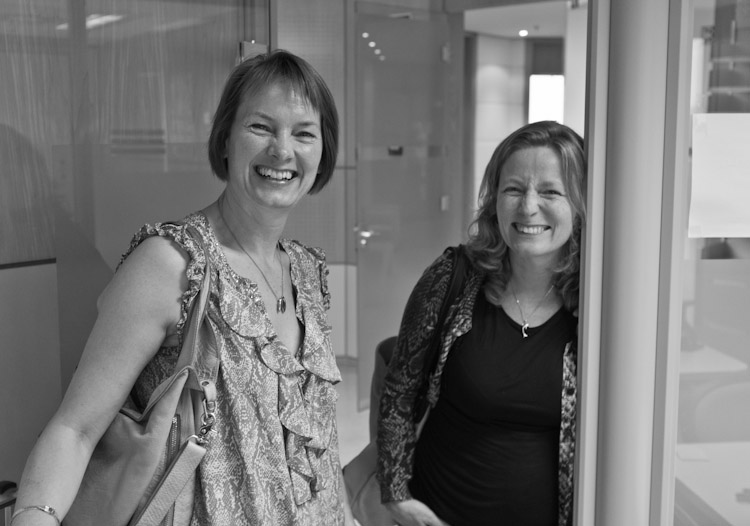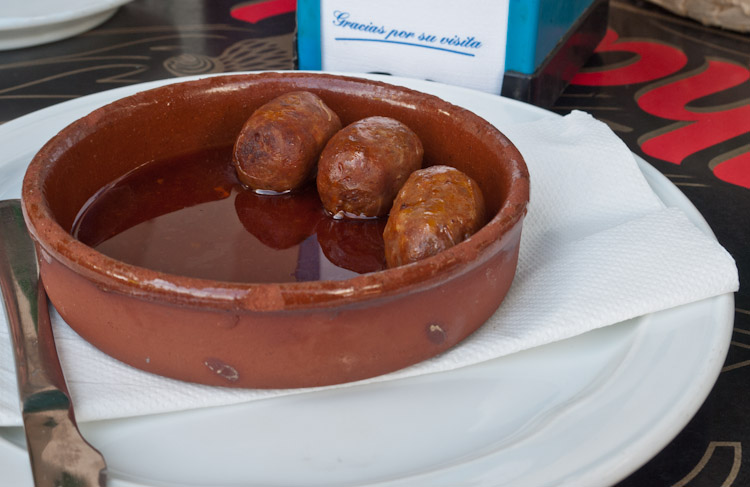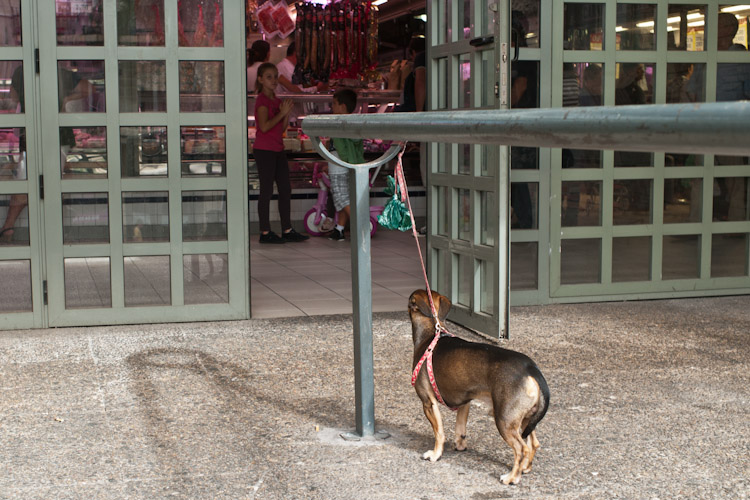The big event last week was the annual visit of my sister and brother-in-law. They live in Poland, and always come to visit us in October.
41_1
My brother-in-law is 74, but a very young 74. And he loves the pool. Within 30 minutes of arriving at our house from the airport, he did this:

41_2
As always, when someone is in the pool, Cheeta hangs around, hoping for an invitation to join in:

41_3
Then we sat down for a lunch consisting of Spanish, Polish and Danish food, sprinkled with Polish vodka and other good things:

41_4
In the afternoon, we went to the Game Café to drink mojitos and watch the amateur aging rockers:

41_5
There is a bar outside and inside. Walter supervises the mixing:

41_6
I was not the only photographer there:

Then a couple of street details from Alicante.
41_7
Poster remnant:

41_8
Bike path:

41_9
Protest sign “There are not too many workers, there are too many thieves”, referring to bankers and politicians:

A couple of visitors at the office.
41_10
Beatrice brought her baby girl to analyse the strategic plan of the office:

41_11
Caroline is Dutch and Bente is Danish:

A few photos taking while cycling come next.
41_12
Children outside the church in Aigües:

41_13
The annual Moros y Cristianos festival was going in El Campello this weekend. I passed this vehicle and stopped to take a picture:

41_14
They had a passenger in the back:

I took my sister to eat at Hostal Maruja, the beach restaurant south of Santa Pola that was going to close for the winter a couple of days later.
41_15
One of their specialties, chorizo in cider:

41_16
The scene was definitely not wintry, although the beach is beginning to look desolate:

41_17
The water is certainly still warm enough:

41_18
Later, we stopped at the harbour in El Campello to see if the cats were still around:

41_19
Saturday was my sister’s birthday, and I was going make a nice lamb roast. We went to the Mercado Central in the morning. I noticed that flowers had been put on the plaque commemorating one of the worst atrocities of the Civil War, the bombardment of the square behind the Mercado in 1938 which left more than 300 people dead:

41_20
Inside the Mercado, I set about photographing people as I usually do. Here, a little girl is looking at the rabbits on display:

41_21
The Mercado has three main parts. Upstairs is the meat, and downstairs the fish and vegetables. The fish section provides the most spectacular views:

41_22
Fishmonger at work:

41_23
A sad creature, waiting for its human:

41_24
The next day, we drove to Lorca, a town in the Murcia province about 150 km from Alicante, which was hit by a deadly earthquake last year. The town is located close to the Andalusia border, and its fort was an important military installation in the Middle Ages:

41_25
There a spectacular view of the town from the Castillo:

41_26
An equally spectacular sun dial:

41_27
The earthquake damaged buildings, old and new:

41_28
Church with caved-in roof:

41_29
There are many gutted buildings in Lorca. The townspeople complain bitterly of the slowness with which government aid has arrived:

The final two pictures are from my back porch.
41_30
My late mother’s cactus greeted my sister’s visit with a rare double bloom:

41_31
Even when it rains, my brother-in-law jumps in the pool. As he says, he is getting wet anyway:
